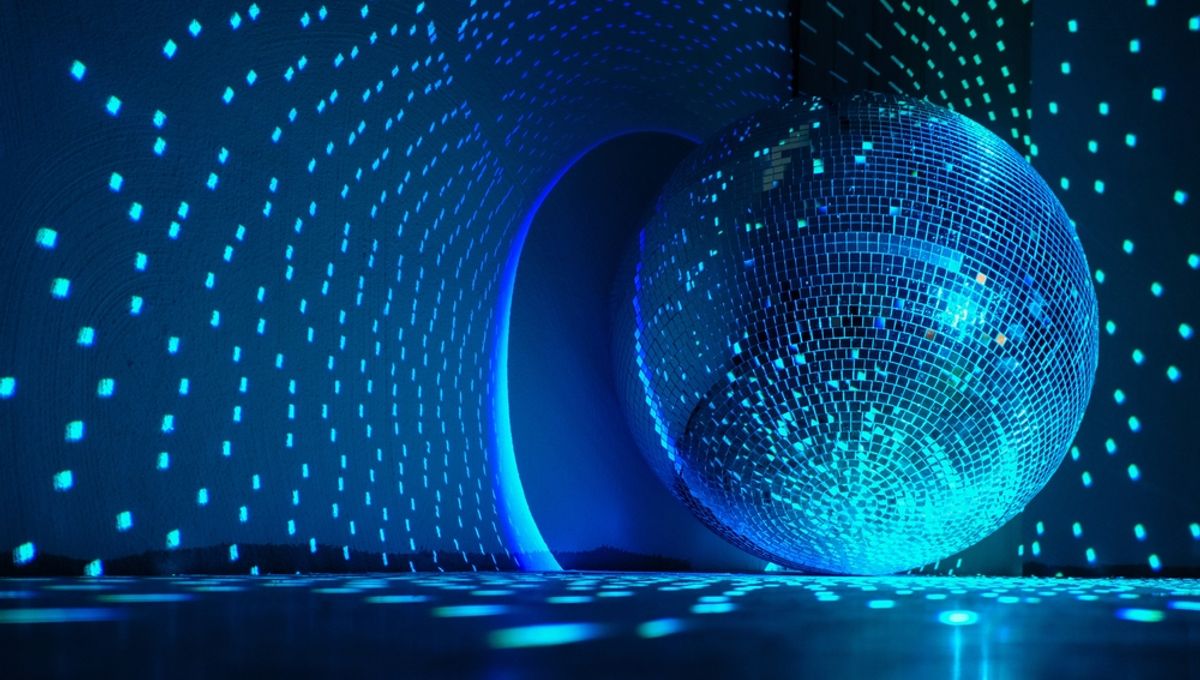
When the Moon blocks out most of the Sun on October 14, tens of millions of North Americans will look to the skies for one of the greatest sights the heavens can offer. European astronomers have some advice on how they can do it cheaply and safely: dig out an old disco ball, which can be repurposed as an astronomical instrument and educational tool.
Even if you’re not in position to watch the annular eclipse, now is a great time to be looking at our local star, with sunspots at the highest levels in 20 years. However, looking directly at the Sun is dangerous. Millions of years of evolution have given us reflexes that usually prevent us from harming our eyes this way, but eclipses allow those who won’t listen to warnings to view the Sun long enough to place their eyesight at risk.
Many solutions have been developed over the years, from projecting the Sun’s image onto a screen to using safety film. Robert Cumming of the Onsala Space Observatory suggests those lacking access to more established instruments could try disco balls instead. People have been confusing them for astronomical phenomena for decades, after all.
Before eclipse glasses became common, the standard way to view the Sun safely was through a pinhole camera. In a yet-to-be-peer-reviewed paper, Cumming and co-authors write: “For astronomical purposes, the optics of disco balls are similar to the optics of the better-known pinhole camera.”
The small reflective surfaces that make up the ball are “pinhead mirrors”, each of which reflects about as much light as a pinhead camera captures. This means that, even when the Sun is not partially obscured by the Moon, a safe image is created.
Pinhead mirrors, the authors note, were first discovered at least as far back as 1934, and were even patented in 1989. (The patent has expired so no need to fear being sued). Most descriptions of how to make a pinhead mirror involve either breaking or covering a larger one. The first has obvious drawbacks even if you don’t fear seven years bad luck, and the second needs to be done thoroughly to be safe.
Disco balls offer a readily available alternative. Better still, if suitably positioned, they allow many people to participate at once, making them an ideal educational tool, the authors write.
After testing different disco balls, the authors conclude that the best distance to focus the light from a disco ball is 15-91 meters (50-300 feet) away, usually only possible in large buildings such as science museums. However, if less space is available, the authors found tolerable images can be projected at distances of more than 2 meters (7 feet).
“Unlike commonly used tools for projecting eclipses, such as pinhole projectors, colanders, or tree canopies, a disco ball is able to function for large crowds because it does not merely work on the area where it casts its shadow, but across the entire illuminated hemisphere, which can project solar images across an entire room or courtyard,” the authors write. There is also no need to be constantly moving the reflector – as the Sun crosses the sky, different facets will do the reflecting.
Unfortunately, the authors could only make out the largest sunspots with the balls they used, but were able to watch the shadow wax and wane during Northern Europe’s October 2022 partial lunar eclipse. They report the clearest images are produced by projecting onto stiff white card, rather than walls or floor.
The paper has been submitted to Physics Education, and a preprint is available on arXiv.
Source Link: You Could Use A Disco Ball To Watch The “Ring Of Fire” Eclipse